|
Greater Iran
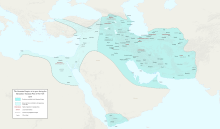
Greater Iran or Greater Persia (Persian: ایران بزرگ Irān-e Bozorg), also called the Iranosphere or the Persosphere, is an expression that denotes a wide socio-cultural region comprising parts of West Asia, the Caucasus, Central Asia, South Asia, and East Asia (specifically the Tarim Basin)—all of which have been affected, to some degree, by the Iranian peoples and the Iranian languages.[1][2] It is defined by having long been ruled by the dynasties of various Iranian empires,[note 1][3][4][5] under whom the local populaces gradually incorporated some degree of Iranian influence into their cultural and/or linguistic traditions;[note 2] or alternatively as where a considerable number of Iranians settled to still maintain communities who patronize their respective cultures,[note 3] geographically corresponding to the areas surrounding the Iranian plateau.[6][7] It is referred to as the "Iranian Cultural Continent" by Encyclopædia Iranica.[8] Throughout the 16th–19th centuries, Iran lost many of the territories that had been conquered under the Safavids and Qajars. The Ottoman–Iranian Wars resulted in the loss of present-day Iraq to the Ottoman Empire, as outlined in the Treaty of Amasya in 1555 and the Treaty of Zuhab in 1639. Simultaneously, the Russo-Iranian Wars resulted in the loss of the Caucasus to the Russian Empire: the Treaty of Gulistan in 1813 saw Iran cede present-day Dagestan, Georgia, and most of Azerbaijan;[9][10][11] the Treaty of Turkmenchay in 1828 saw Iran cede present-day Armenia, the remainder of Azerbaijan, and Iğdır, setting the northern boundary along the Aras River.[12][13] Parts of Afghanistan were lost to the British Empire through the Treaty of Paris in 1857 and the McMahon Arbitration in 1905.[14][15] EtymologyThe name "Iran", meaning "land of the Aryans", is the New Persian continuation of the old genitive plural aryānām (proto-Iranian, meaning "of the Aryans"), first attested in the Avesta as airyānąm (the text of which is composed in Avestan, an old Iranian language spoken in northeastern Greater Iran, or in what are now Afghanistan, Uzbekistan, Turkmenistan and Tajikistan).[16][17][18][19] The proto-Iranian term aryānām is present in the term Airyana Vaēǰah, the homeland of Zoroaster and Zoroastrianism, near the provinces of Sogdiana, Margiana, Bactria, etc., listed in the first chapter of the Vidēvdād.[20][21] The Avestan evidence is confirmed by Greek sources: Arianē is spoken of as being between Persia and the Indian subcontinent.[22] However, this is a Greek pronunciation of the name Haroyum/Haraiva (Herat), which the Greeks called 'Aria'[23] (a land listed separately from the homeland of the Aryans).[24][25] While up until the end of the Parthian period in the 3rd century CE, the idea of "Irān" had an ethnic, linguistic, and religious value, it did not yet have a political import. The idea of an "Iranian" empire or kingdom in a political sense is a purely Sasanian one. It was the result of a convergence of interests between the new dynasty and the Zoroastrian clergy, as we can deduce from the available evidence. This convergence gave rise to the idea of an Ērān-šahr "Kingdom of the Iranians", which was "ēr" (Middle Persian equivalent of Old Persian "ariya" and Avestan "airya").[22] DefinitionRichard Nelson Frye defines Greater Iran as including "much of the Caucasus, Iraq, Afghanistan, Pakistan and Central Asia, with cultural influences extending to China and western India." According to him, "Iran means all lands and peoples where Iranian languages were and are spoken, and where in the past, multi-faceted Iranian cultures existed."[26] Richard Foltz notes that while "A general assumption is often made that the various Iranian peoples of 'greater Iran'—a cultural area that stretched from Mesopotamia and the Caucasus into Khwarizm, Transoxiana, Bactria, and the Pamirs and included Persians, Medes, Parthians and Sogdians among others—were all 'Zoroastrians' in pre-Islamic times... This view, even though common among serious scholars, is almost certainly overstated." He argues that "While the various Iranian peoples did indeed share a common pantheon and pool of religious myths and symbols, in actuality a variety of deities were worshipped—particularly Mitra, the god of covenants, and Anahita, the goddess of the waters, but also many others—depending on the time, place, and particular group concerned".[27] To the Ancient Greeks, Greater Iran ended at the Indus River located in Pakistan.[28] According to J. P. Mallory and Douglas Q. Adams most of Western greater Iran spoke Southwestern Iranian languages in the Achaemenid era while the Eastern territory spoke Eastern Iranian languages related to Avestan.[29] George Lane also states that after the dissolution of the Mongol Empire, the Ilkhanids became rulers of greater Iran[30] and Uljaytu, according to Judith G. Kolbas, was the ruler of this expanse between 1304 and 1317 A.D.[31] Primary sources, including Timurid historian Mir Khwand, define Iranshahr (Greater Iran) as extending from the Euphrates to the Oxus[32] The Cambridge History of Iran takes a geographical approach in referring to the "historical and cultural" entity of "Greater Iran" as "areas of Iran, parts of Afghanistan, Chinese and Soviet Central Asia".[33] Background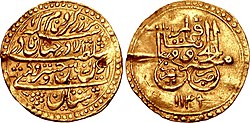 Greater Iran is called Iranzamin (ایرانزمین) which means "Iranland" or "The Land of Iran". Iranzamin was in the mythical times as opposed to the Turanzamin, "The Land of Turan", which was located in the upper part of Central Asia.[35][verification needed] With Imperial Russia continuously advancing south in the course of two wars against Persia, and the treaties of Turkmenchay and Gulistan in the western frontiers, plus the unexpected death of Abbas Mirza in 1833, and the murdering of Persia's Grand Vizier (Mirza AbolQasem Qa'im Maqām), many Central Asian khanates began losing hope for any support from Persia against the Tsarist armies.[36] The Russian armies occupied the Aral coast in 1849, Tashkent in 1864, Bukhara in 1867, Samarkand in 1868, and Khiva and Amudarya in 1873.
RegionsIn the 8th century, Iran was conquered by the Arab Abbassids who ruled from Baghdad. The territory of Iran at that time was composed of two portions: Persian Iraq (western portion) and Khorasan (eastern portion). The dividing region was mostly the cities of Gurgan and Damaghan. The Ghaznavids, Seljuqs and Timurids divided their empires into Iraqi and Khorasani regions. This point can be observed in many books such as Abul Fazl Bayhqi's "Tārīkhi Baïhaqī", Al-Ghazali's Faza'ilul al-anam min rasa'ili hujjat al-Islam and other books. Transoxiana and Chorasmia were mostly included in the Khorasanian region. CaucasusNorth Caucasus Dagestan remains the bastion of Persian culture in the North Caucasus with fine examples of Iranian architecture like the Sassanid citadel in Derbent, the strong influence of Persian cuisine, and common Persian names amongst the ethnic peoples of Dagestan. The ethnic Persian population of the North Caucasus, the Tats, remain, despite strong assimilation over the years, still visible in several North Caucasian cities. Even today, after decades of partition, some of these regions retain Iranian influences, as seen in their old beliefs, traditions and customs (e.g. Norouz).[40] South CaucasusAccording to Tadeusz Swietochowski, the territories of Iran and the republic of Azerbaijan usually shared the same history from the time of ancient Media (ninth to seventh centuries b.c.) and the Persian Empire (sixth to fourth centuries b.c.).[41][page needed] Intimately and inseparably intertwined histories for millennia, Iran irrevocably lost the territory that is nowadays Azerbaijan in the course of the 19th century. With the Treaty of Gulistan of 1813 following the Russo-Persian War (1804–1813) Iran had to cede eastern Georgia, its possessions in the North Caucasus and many of those in what is today the Azerbaijan Republic, which included the khanates of Baku, Shirvan, Karabakh, Ganja, Shaki, Quba, Derbent, and parts of Talysh. These Khanates comprise most of what is today the Republic of Azerbaijan and Dagestan in Southern Russia. In the Treaty of Turkmenchay of 1828 following the Russo-Persian War (1826–1828), the result was even more disastrous, and resulted in Iran being forced to cede the remainder of the Talysh Khanate, the khanates of Nakhichevan and Erivan, and the Mughan region to Russia. All these territories together, lost in 1813 and 1828 combined, constitute all of the modern-day Republic of Azerbaijan, Armenia, and southern Dagestan. The area to the North of the river Aras, among which the territory of the contemporary republic of Azerbaijan were Iranian territory until they were occupied by Russia in the course of the 19th century.[42][43][44][45][46][47] Many localities in this region bear Persian names or names derived from Iranian languages and Azerbaijan remains by far Iran's closest cultural, religious, ethnic, and historical neighbor. Azerbaijanis are by far the second-largest ethnicity in Iran, and comprise the largest community of ethnic Azerbaijanis in the world, vastly outnumbering the number in the Republic of Azerbaijan. Both nations are the only officially Shia majority in the world, with adherents of the religion comprising an absolute majority in both nations. The people of nowadays Iran and Azerbaijan were converted to Shiism during exactly the same time in history. Furthermore, the name of "Azerbaijan" is derived through the name of the Persian satrap which ruled the contemporary region of Iranian Azerbaijan and minor parts of the Republic of Azerbaijan in ancient times.[48][49] Central Asia Khwarazm is one of the regions of Iran-zameen, and is the home of the ancient Iranians, Airyanem Vaejah, according to the ancient book of the Avesta. Modern scholars believe Khwarazm to be what ancient Avestic texts refer to as "Ariyaneh Waeje" or Iran vij. Iranovich These sources claim that Urgandj, which was the capital of ancient Khwarazm for many years, was actually "Ourva": the eighth land of Ahura Mazda mentioned in the Pahlavi text of Vendidad. Others such as University of Hawaii historian Elton L. Daniel believe Khwarazm to be the "most likely locale" corresponding to the original home of the Avestan people,[51][verification needed] while Dehkhoda calls Khwarazm "the cradle of the Aryan people" (مهد قوم آریا). Today Khwarazm is split between several central Asian republics. Superimposed on and overlapping with Chorasmia was Khorasan which roughly covered nearly the same geographical areas in Central Asia (starting from Semnan eastward through northern Afghanistan roughly until the foothills of Pamir, ancient Mount Imeon). Current day provinces such as Sanjan in Turkmenia, Razavi Khorasan Province, North Khorasan Province, and Southern Khorasan Province in Iran are all remnants of the old Khorasan. Until the 13th century and the devastating Mongol invasion of the region, Khorasan was considered the cultural capital of Greater Iran.[52][page needed] ChinaXinjiang
The Tashkurgan Tajik Autonomous County regions of China harbored a Tajik population and culture.[53] Chinese Tashkurgan Tajik Autonomous County was always counted as a part of the Iranian cultural & linguistic continent with Kashgar, Yarkand, and Hotan bound to the Iranian history.[54] West AsiaBahrain From the 6th century BC to the 3rd century BC, Bahrain was a prominent part of the Persian Empire under the Achaemenid dynasty. It was referred to by the Greeks as "Tylos", the centre of pearl trading, when Nearchus discovered it while serving under Alexander the Great.[55] From the 3rd century BC to the arrival of Islam in the 7th century AD, the island was controlled by two other Iranian dynasties, the Parthians and the Sassanids. In the 3rd century AD, the Sassanids succeeded the Parthians and controlled the area for four centuries until the Arab conquest.[56] Ardashir, the first ruler of the Iranian Sassanid dynasty marched to Oman and Bahrain and defeated Sanatruq[57] (or Satiran[58]), probably the Parthian governor of Bahrain.[59] He appointed his son Shapur I as governor. Shapur constructed a new city there and named it Batan Ardashir after his father.[58] At this time, it incorporated the southern Sassanid province covering the Persian Gulf's southern shore plus the archipelago of Bahrain.[59] The southern province of the Sassanids was subdivided into three districts; Haggar (now al-Hafuf province, Saudi Arabia), Batan Ardashir (now al-Qatif province, Saudi Arabia), and Mishmahig (now Bahrain Island)[58] (In Middle-Persian/Pahlavi it means "ewe-fish").[60] 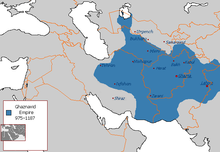 By about 130 BC, the Parthian dynasty brought the Persian Gulf under their control and extended their influence as far as Oman. Because they needed to control the Persian Gulf trade route, the Parthians established garrisons along the southern coast of the Persian Gulf.[56] through warfare and economic distress, been reduced to only 60.[61] The influence of Iran was further undermined at the end of the 18th century when the ideological power struggle between the Akhbari-Usuli strands culminated in victory for the Usulis in Bahrain.[62] An Afghan uprising led by Hotakis of Kandahar at the beginning of the 18th century resulted in the near-collapse of the Safavid state.[citation needed] In the resultant power vacuum, Oman invaded Bahrain in 1717, ending over one hundred years of Persian hegemony in Bahrain. The Omani invasion began a period of political instability and a quick succession of outside rulers took power with consequent destruction. According to a contemporary account by theologian, Sheikh Yusuf Al Bahrani, in an unsuccessful attempt by the Persians and their Bedouin allies to take back Bahrain from the Kharijite Omanis, much of the country was burnt to the ground.[63] Bahrain was eventually sold back to the Persians by the Omanis, but the weakness of the Safavid empire saw Huwala tribes seize control.[64] 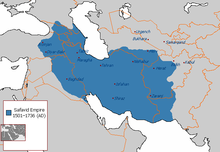 In 1730, the new Shah of Persia, Nadir Shah, sought to re-assert Persian sovereignty in Bahrain. He ordered Latif Khan, the admiral of the Persian navy in the Persian Gulf, to prepare an invasion fleet in Bushehr.[citation needed] The Persians invaded in March or early April 1736 when the ruler of Bahrain, Shaikh Jubayr, was away on hajj.[citation needed] The invasion brought the island back under central rule and to challenge Oman in the Persian Gulf. He sought help from the British and Dutch, and he eventually recaptured Bahrain in 1736.[65] During the Qajar era, Persian control over Bahrain waned[citation needed] and in 1753, Bahrain was occupied by the Sunni Persians of the Bushire-based Al Madhkur family,[66] who ruled Bahrain in the name of Persia and paid allegiance to Karim Khan Zand. 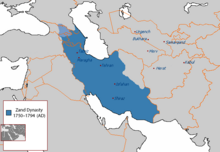 During most of the second half of the eighteenth century, Bahrain was ruled by Nasr Al-Madhkur, the ruler of Bushehr. The Bani Utibah tribe from Zubarah exceeded in taking over Bahrain after war broke out in 1782. Persian attempts to reconquer the island in 1783 and in 1785 failed; the 1783 expedition was a joint Persian-Qawasim invasion force that never left Bushehr. The 1785 invasion fleet, composed of forces from Bushehr, Rig, and Shiraz was called off after the death of the ruler of Shiraz, Ali Murad Khan. Due to internal difficulties, the Persians could not attempt another invasion.[citation needed] In 1799, Bahrain came under threat from the expansionist policies of Sayyid Sultan, the Sultan of Oman, when he invaded the island under the pretext that Bahrain did not pay taxes owed.[citation needed] The Bani Utbah solicited the aid of Bushire to expel the Omanis on the condition that Bahrain would become a tributary state of Persia. In 1800, Sayyid Sultan invaded Bahrain again in retaliation and deployed a garrison at Arad Fort, in Muharraq island and had appointed his twelve-year-old son Salim, as Governor of the island.[67] 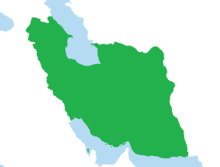 Many names of villages in Bahrain are derived from the Persian language.[68] These names were thought to have been as a result influences during the Safavid rule of Bahrain (1501–1722) and previous Persian rule. Village names such as Karbabad, Salmabad, Karzakan, Duraz, Barbar were originally derived from the Persian language, suggesting that Persians had a substantial effect on the island's history.[68] The local Bahrani Arabic dialect has also borrowed many words from the Persian language.[68] Bahrain's capital city, Manama is derived from two Persian words meaning 'I' and 'speech'.[68][contradictory] In 1910, the Persian community funded and opened a private school, Al-Ittihad school, that taught Farsi amongst other subjects.[69] According to the 1905 census, there were 1650 Bahraini citizens of Persian origin.[70] Historian Nasser Hussain says that many Iranians fled their native country in the early 20th century due to a law king Reza Shah issued which banned women from wearing the hijab, or because they feared for their lives after fighting the English or to find jobs. They were coming to Bahrain from Bushehr and the Fars province between 1920 and 1940. In the 1920s, local Persian merchants were prominently involved in the consolidation of Bahrain's first powerful lobby with connections to the municipality in an effort to contest the municipal legislation of British control.[70] Bahrain's local Persian community has heavily influenced the country's local food dishes. One of the most notable local delicacies of the people in Bahrain is mahyawa, which is consumed in Southern Iran as well. It is a watery, earth-brick-coloured sauce made from sardines, and consumed with bread or other food. Bahrain's Persians are also famous in Bahrain for bread-making. Another local delicacy is pishoo made from rose water (golab) and agar agar. Other food items consumed are similar to Persian cuisine. IraqThroughout history, Iran always had strong cultural ties with the region of present-day Iraq. Mesopotamia is considered the cradle of civilization and the place where the first empires in history were established. These empires, namely the Sumerian, Akkadian, Babylonian, and Assyrian, dominated the ancient middle east for millennia, which explains the great influence of Mesopotamia on the Iranian culture and history, and it is also the reason why the later Iranian and Greek dynasties chose Mesopotamia to be the political center of their rule. For a period of around 500 years, what is now Iraq formed the core of Iran, with the Iranian Parthian and Sasanian empire having their capital in what is modern-day Iraq for the same centuries-long time span. (Ctesiphon)
  According to Iranologist Richard N. Frye:[72][73]
Testimony to the close relationship shared by Iraq and western Iran during the Abbasid era and later centuries, is the fact that the two regions came to share the same name. The western region of Iran (ancient Media) was called 'Irāq-e 'Ajamī ("Persian Iraq"), while central-southern Iraq (Babylonia) was called 'Irāq al-'Arabī ("Arabic Iraq") or Bābil ("Babylon"). For centuries the two neighbouring regions were known as "The Two Iraqs" ("al-'Iraqain"). The 12th century Persian poet Khāqāni wrote a famous poem Tohfat-ul Iraqein ("The Gift of the Two Iraqs"). The city of Arāk in western Iran still bears the region's old name, and Iranians still traditionally call the region between Tehran, Isfahan and Īlām "ʿErāq". During the medieval ages, Mesopotamian and Iranian peoples knew each other's languages because of trade, and because Arabic was the language of religion and science at that time. The Timurid historian Ḥāfeẓ-e Abru (d. 1430) wrote of Iraq:[74]
Iraqis share religious and certain cultural ties with Iranians. The majority of Iranians are Twelver Shia (an Islamic sect). Iraqi culture has commonalities with the culture of Iran. The Mesopotamian cuisine also has similarities to the Persian cuisine, including common dishes and cooking techniques. The Iraqi dialect has absorbed many words from the Persian language.[75] KurdistanKurds speak a Northwestern Iranian language known as Kurdish. Some historians and linguists, such as Vladimir Minorsky, have suggested that the Medes, an Iranian people who inhabited much of western Iran, including Azerbaijan and Kurdistan, might have been forefathers of modern Kurds.[76] See also
Notes and referencesExplanatory footnotes
Citation footnotes
General references
|
